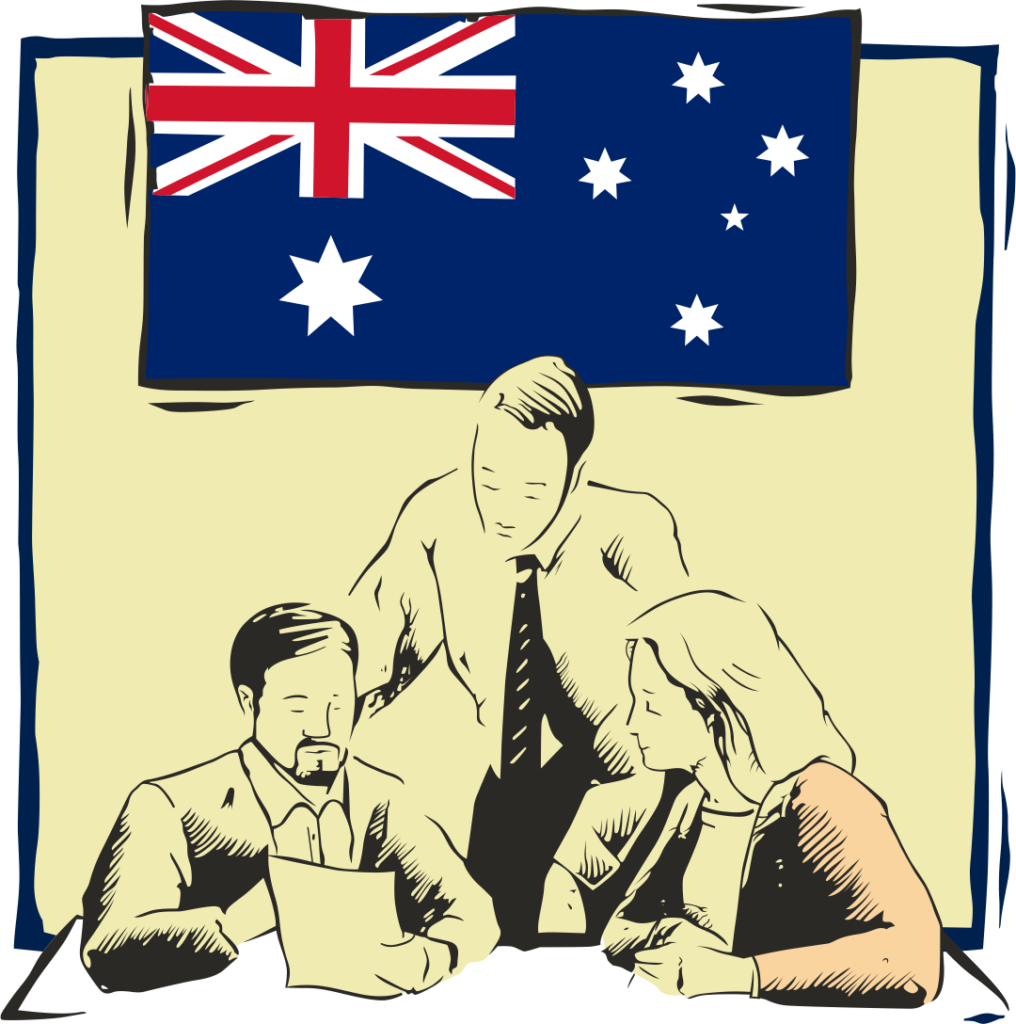
The Australian National Flag may be flown on every day of the year. The following guidelines apply to the Australian National flag generally.

Whether the flag is displayed flat against the surface (either horizontally or vertically) on a staff, on a flag rope, or suspended vertically in the middle of a street, the canton should be in the uppermost left quarter as viewed by the person facing the flag.
In the case of the Australian National flag, the Union Jack should be seen in the top left quarter of the flag.
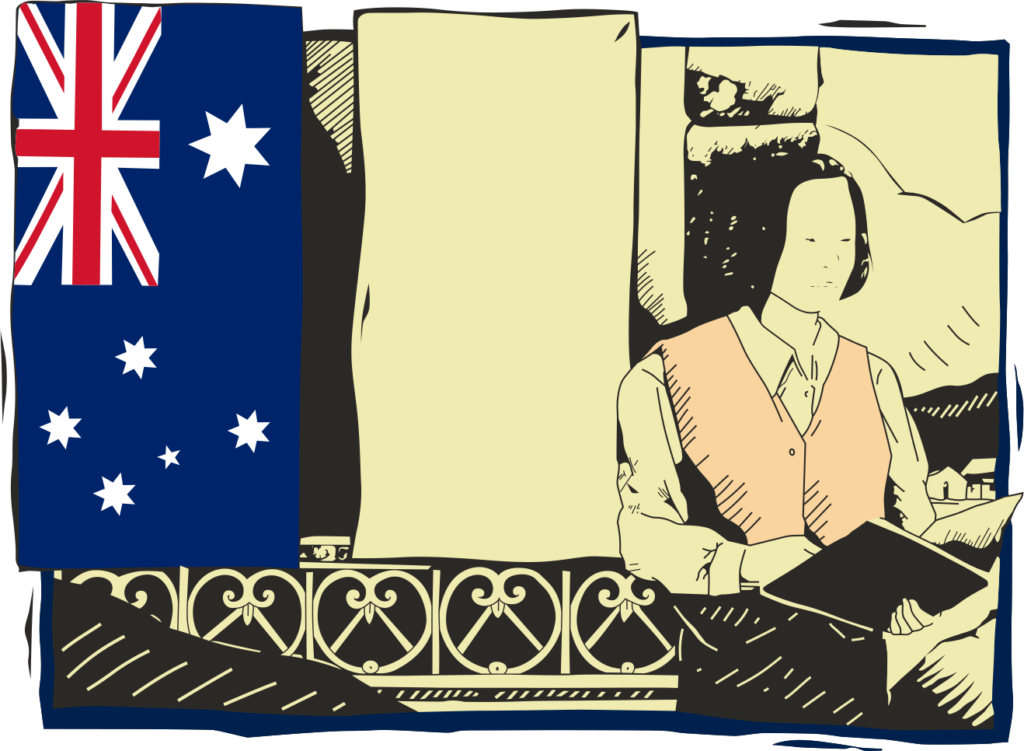
Even when the flag is displayed vertically, this rule must be followed although to the casual observer the flag appears to be back to front. The reason for this is the canton is a position of honour on the flag.
When the Australian National flag is displayed alone on a speaker’s platform, it should be flat against the wall or on a staff on the right of the speaker or he or she faces the audience.
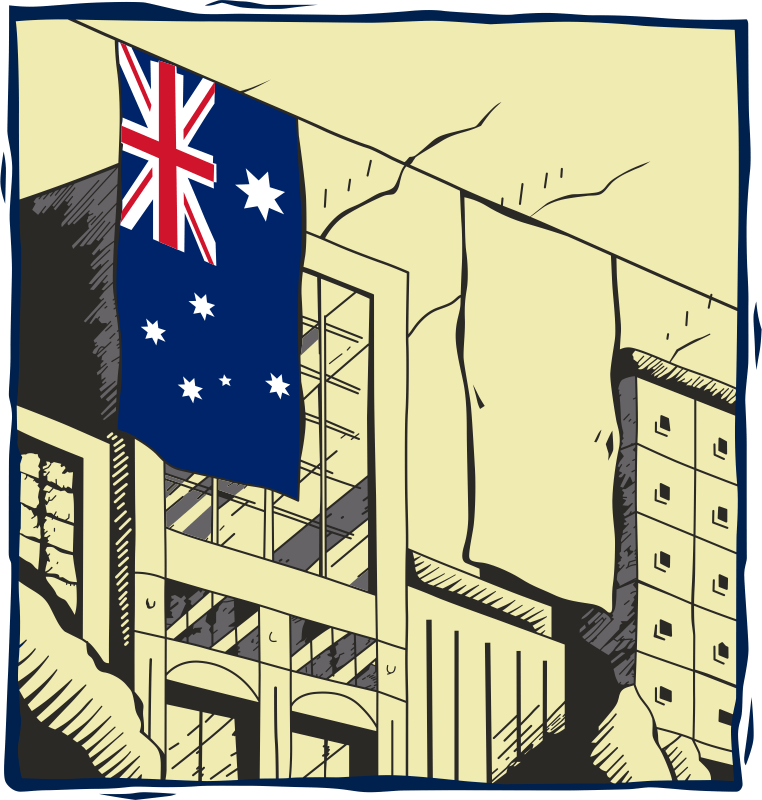
When displayed on a flag rope (a ‘halyard’), the flag should be as close as possible to the flag top, with the flag rope tight.
If the national flag is vertically suspended in an east-west street, the canton should be towards the north. In a north-south street the canton should be towards the east.

Should it be decided to place the flags of nations on a conference table, a single flag representative of each nation present should be placed in front of the leader of that country’s delegation.
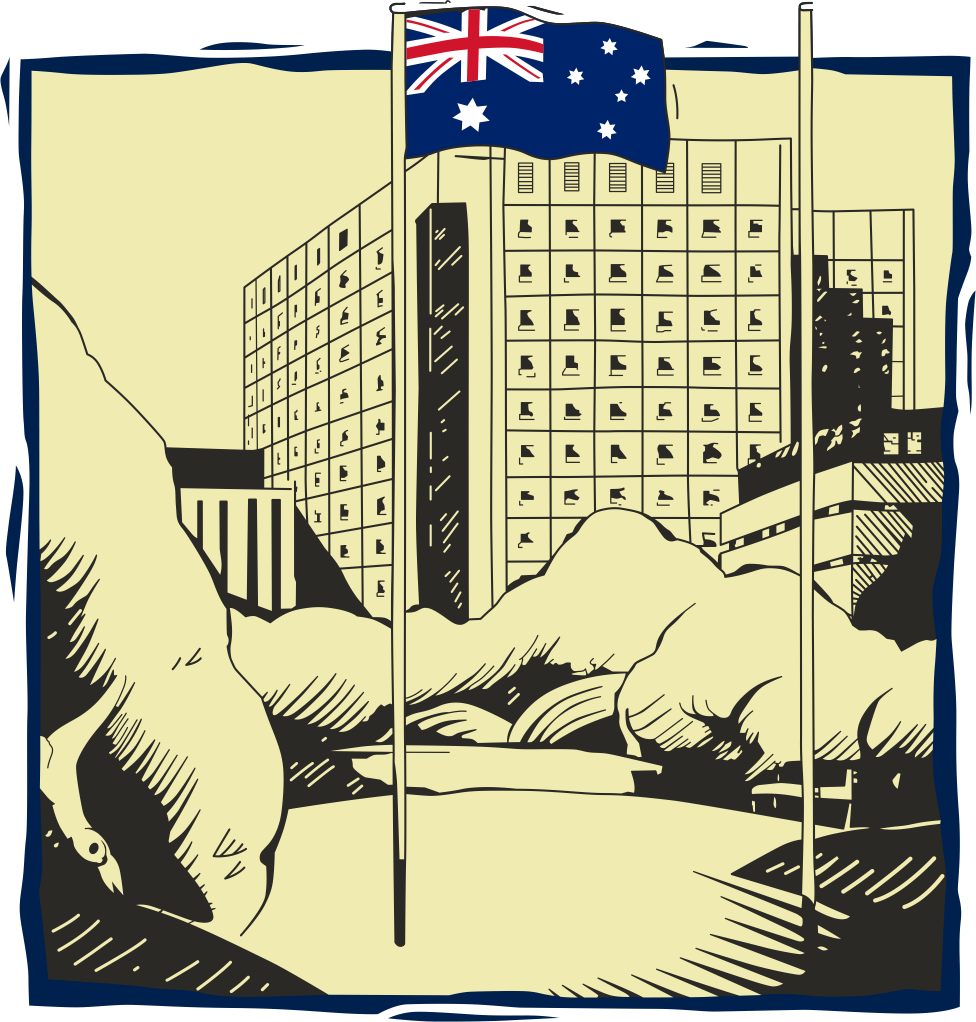
When the Australian national flag is flown alone on top in front of a building with two flagpoles, it should be flown on the flagpole to the left of a person facing the flag.
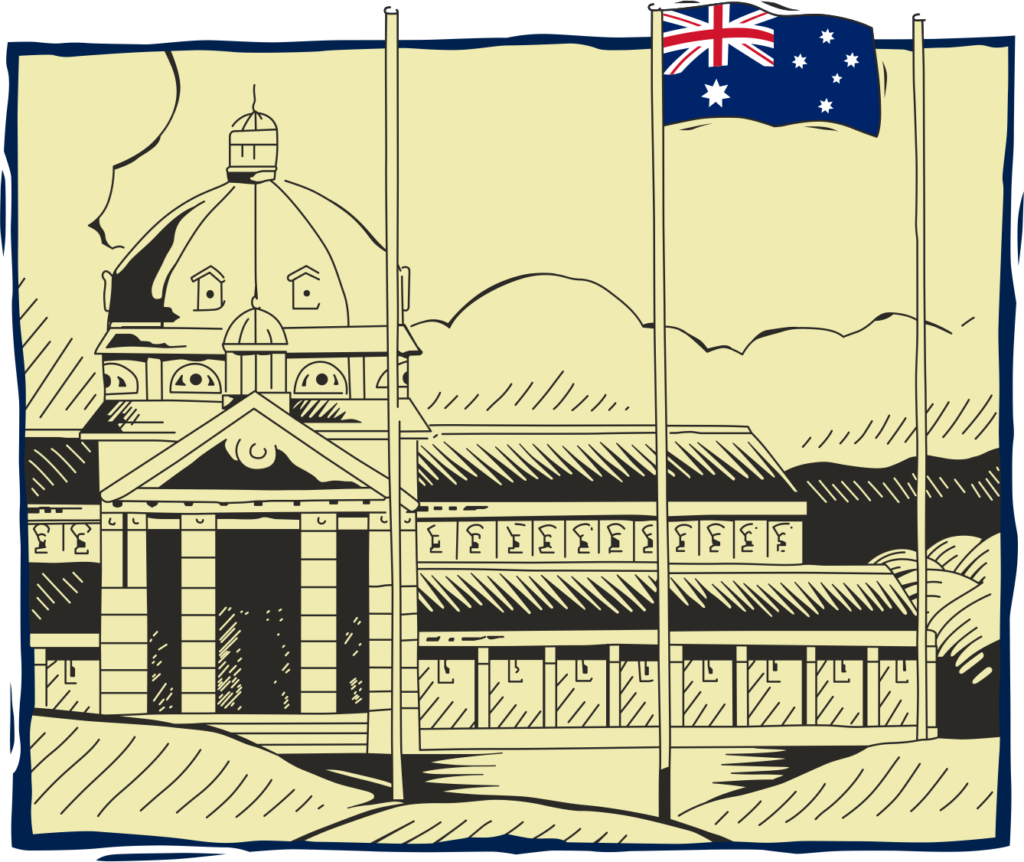
When flown alone on top of or in front of a building with more than two flagpoles, the Australian National flag should be flown in the centre or as near as possible to it.

When the Australian National flag is flown with the flags of other nations, all the flags should, if possible, be the same size and they should be flown on flagpoles of the same height. National flags should never be flown together on the same flagpole. According to international practise, no national flag should fly above another in peacetime.
The Australian National flag must, however, take the position of honour. Further, unless all the flags can be raised and lowered simultaneously, the Australian National flag should be raised first and lowered last.
When flying with only one other national flag, the Australian National flag should fly on the left of a person facing the flags.
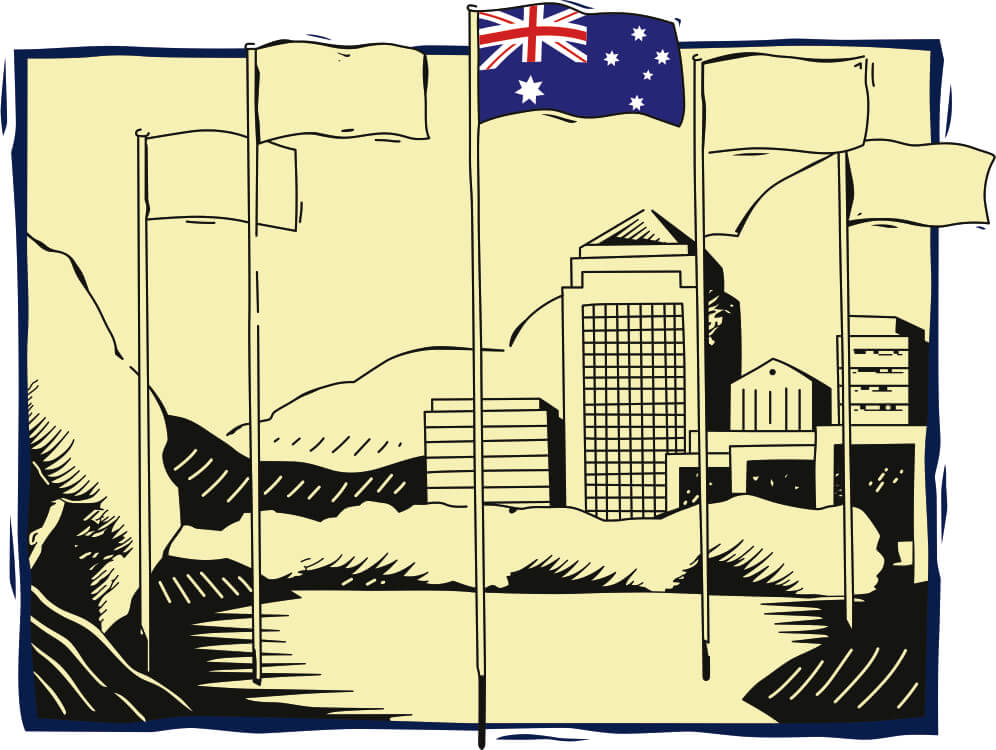
In a line of several national flags, and there is an odd number of flags and only one Australian National flag is available, the Australian National flag should be flowing in the centre.
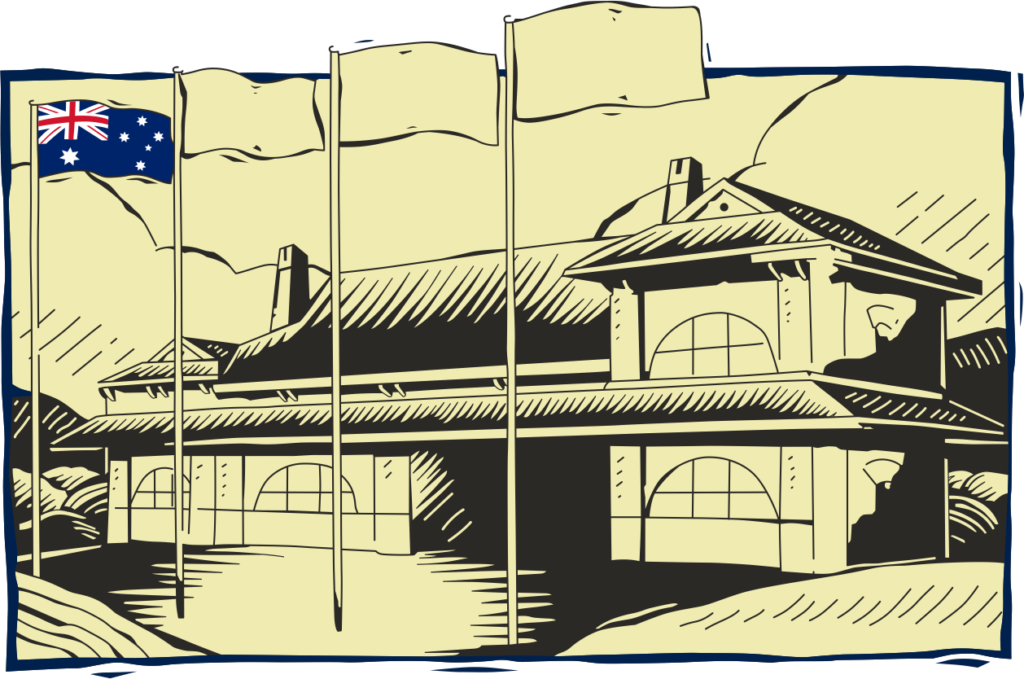
If there is an even number of flags and only one Australian national flag is available, the Australian National flag should be flown on the far left of a person facing the flags.
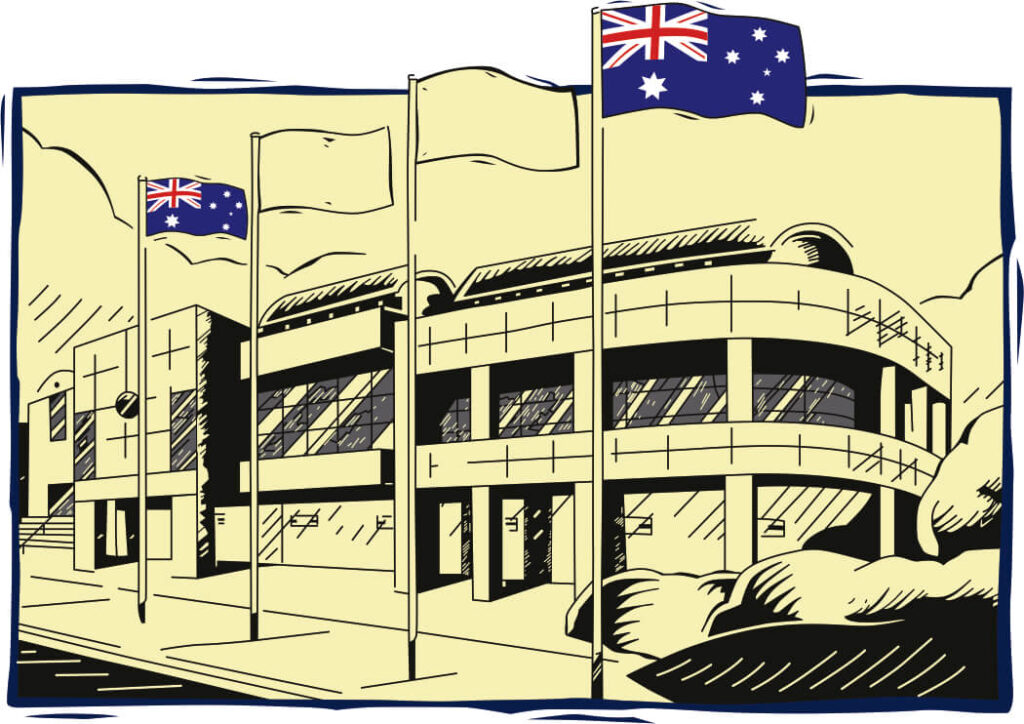
If there is an even number of flags and two Australian National flags are available, one should be flown at each end of the line. The flagpoles must be of uniform height.
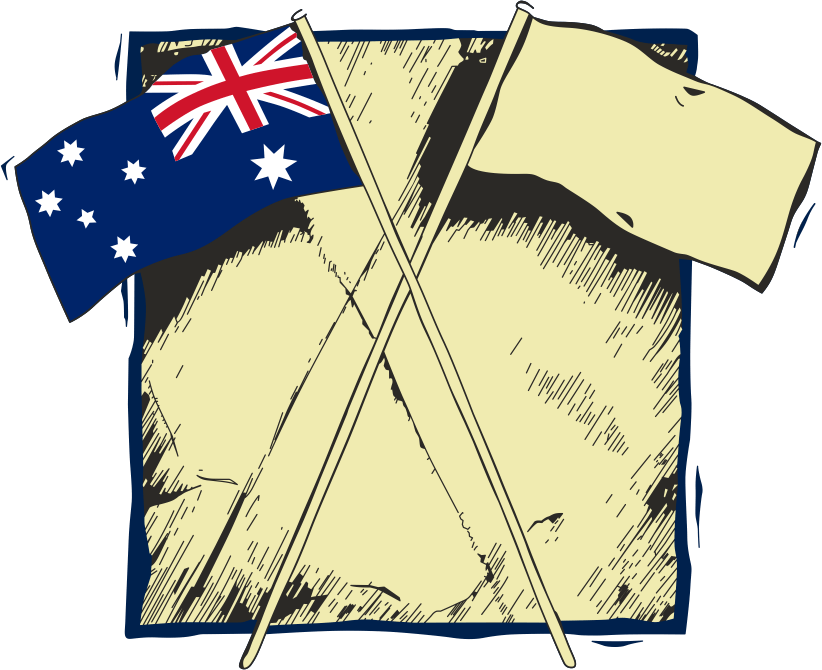
When crossed with another national flag, the Australian National flag should be on the left of a person facing the flags and his staff should be cross in front of the staff of the other flag.

In a semicircle of flags, the Australian National flag should be in the centre.

In an enclosed circle of flags, the Australian National flag should be flown on the flagpole immediately opposite the main entrance to the building or arena.

When flying the Australian national flag with State flags and/ or other flags (such as local government flags, house flags and club pennants) in a line of flagpoles, the order of the flags should follow the rules of precedence. The Australian National flag should always be flown on the far left of a person facing the flags. Except for a flagpole fitted with a gaff, or house flag or club pennant should never be flown above the national flag.
For example, if the Australian National flag was being flown with a State flag and a local government flag, the Australian National flag would be flown on the far left (the position of honour], the State flag to the right of it and the local government flag to the right of the State flag.
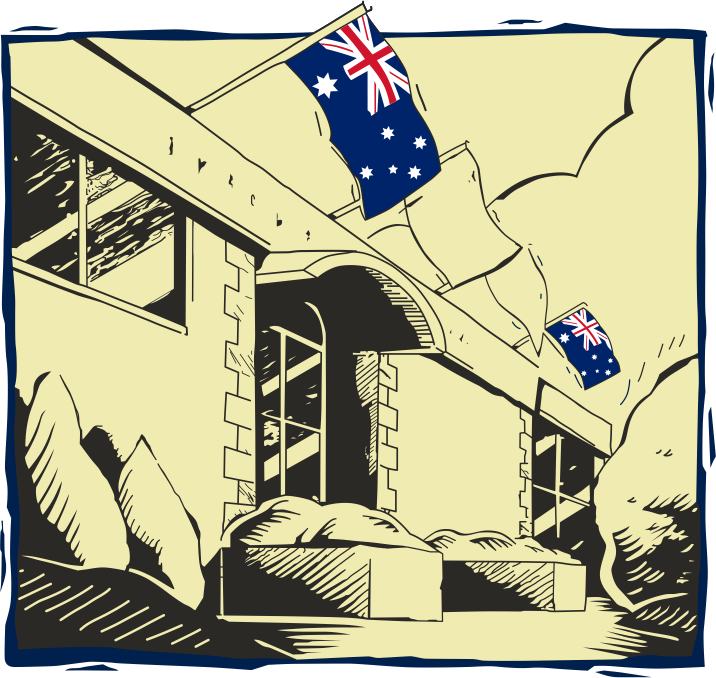
Is there are two Australian National flags, one can be flown at each end of a line of flags.
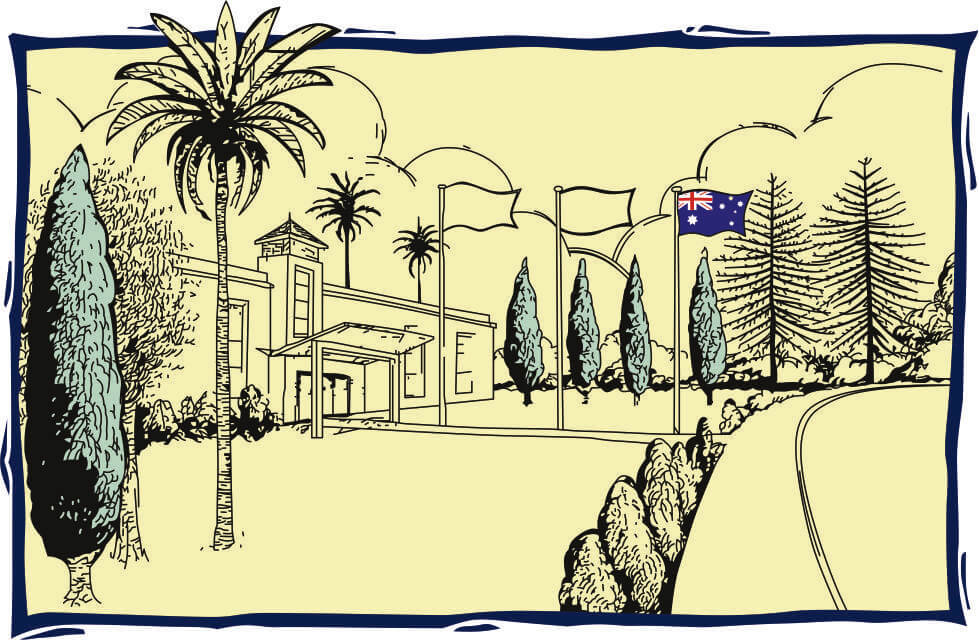
In a single or double row of flagpoles, arranged at right angles from a structure, such as a building or memorial, the Australian National flag should be flown on the far left flagpole nearest the kerb. If two Australian National flags are available, the second flag should be flown on the flagpole on the right nearest the kerb.
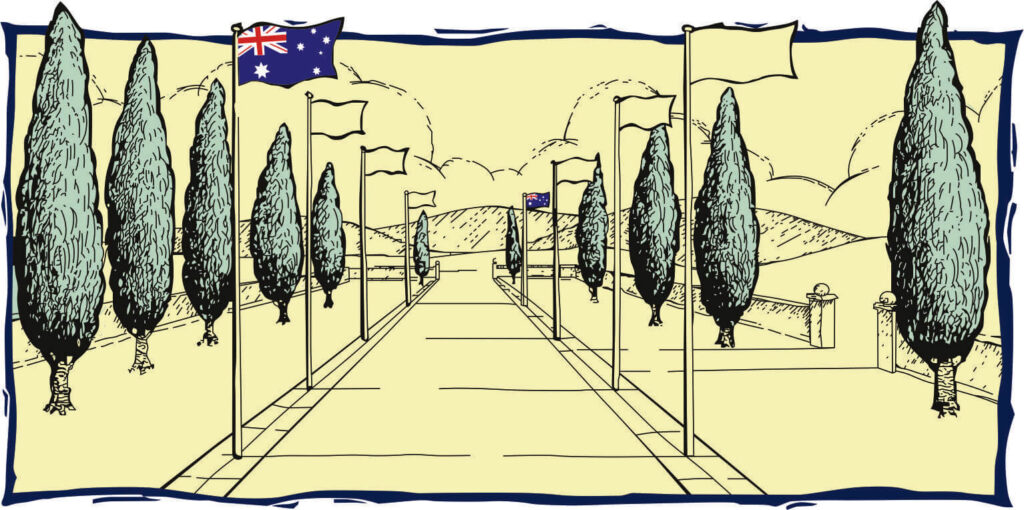
In a double row of flagpoles, where there is no formal focal point, such as a building or memorial, the Australian National flag should be flown on the diagonal corners of the arrangement, with all other flags being arranged according to precedence as for a single row.

When the Australian National flag is being displayed from a flagpole fitted with a yardarm and is flying with another national flag, the Australian National flag should be flown on the left of the yardarm and the flag of the other nation should be flown on the right of the yardarm, as used by a person facing the flags.
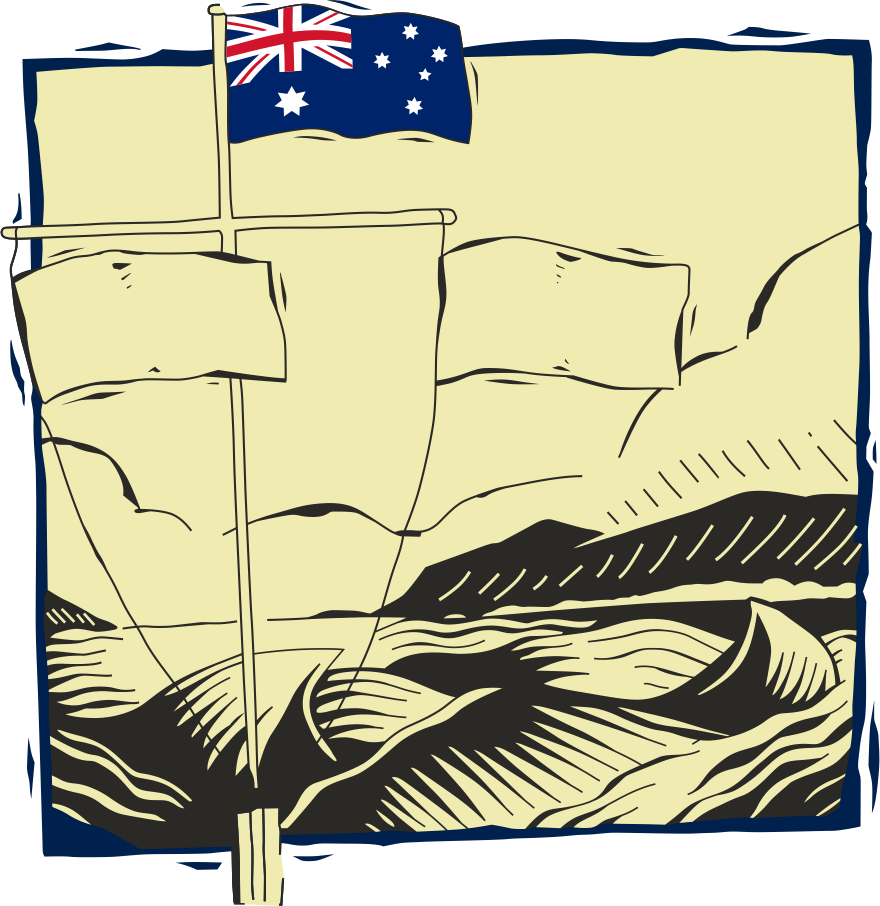
If the Australian National flag is being displayed from a flagpole fitted with the yardarm and his flying with a State flag and a House flag or Pennant, the Australian National flag should be flown from the top of the flagpole, the State flag on the left of the yardarm and the House flag or Pennant on the right side of the yardarm, as viewed by a person facing the flags.
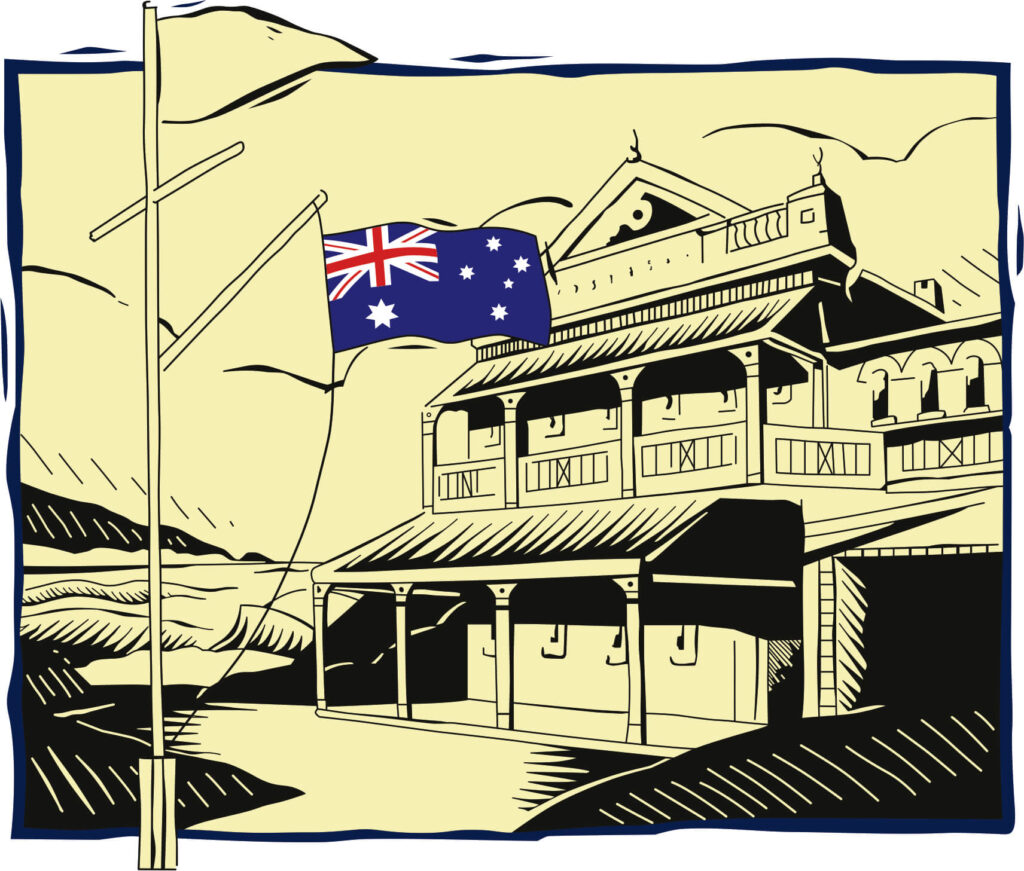
If the flagpole is fitted with a gaff, the Australian National flag should be flown the peak of the gaff, which is a position of honour, even though the Australian National flag is lower than the flag flying from the top of the flagpole. This international tradition originates from the days of sailing ships, when it was necessary to keep the flag free of the ships rigging.
The next following position of prominence is the peak of the flagpole, when the left hand side of the yardarm, then the right hand side, as viewed from the front of the flagpole/ gaffe combination.
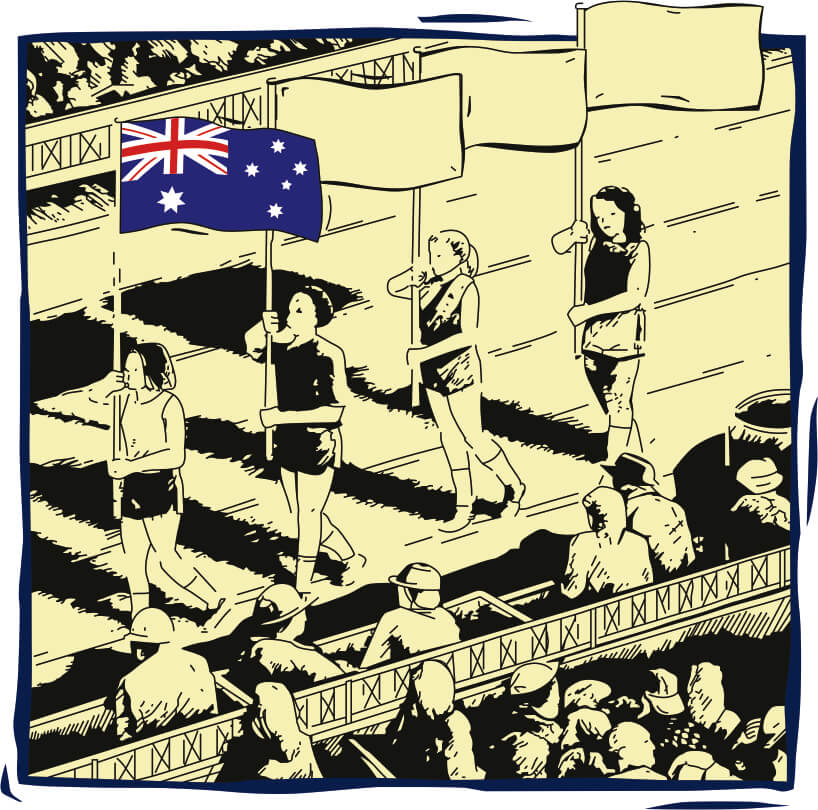
In a line of flags carried in single file, the Australian National flag should always lead. Flags are carried so that the right hand of the carrier is above the left hand.
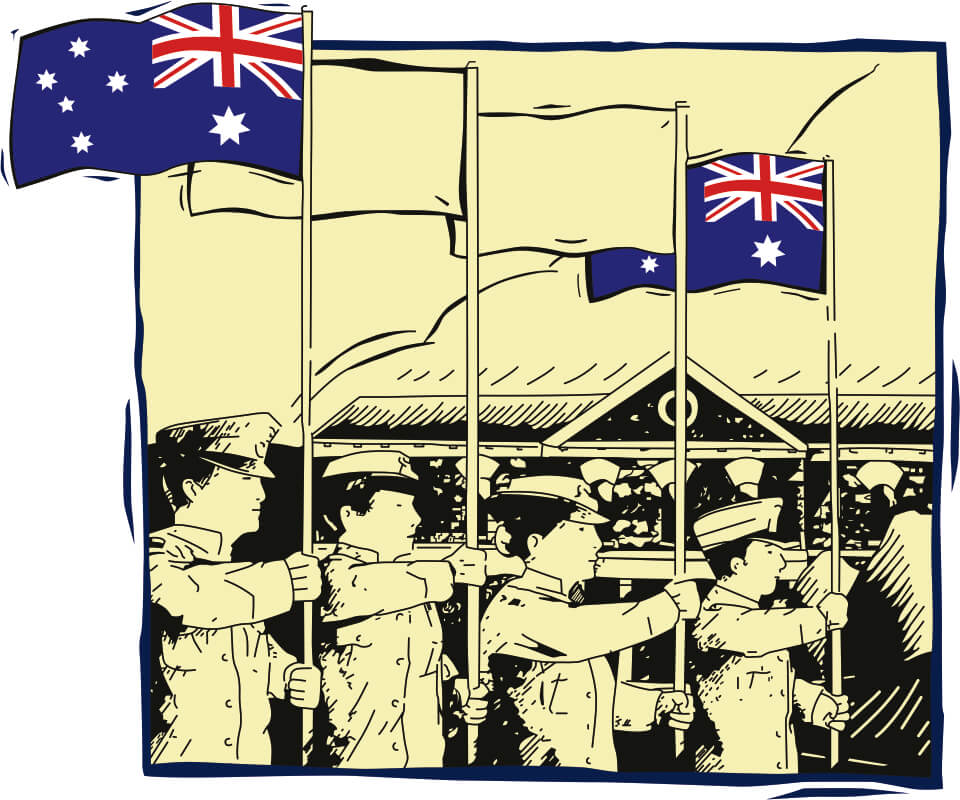
In a line of flags carried abreast, it is preferable to have an Australian National flag carried at each end of the line.

If, however, only one Australian national flag is available, the following applies-

If there is an even number of flags the Australian National flag should be carried on the right-hand end of the line facing the direction of movement (that is, the left end of the line as viewed by a person at facing the flags).
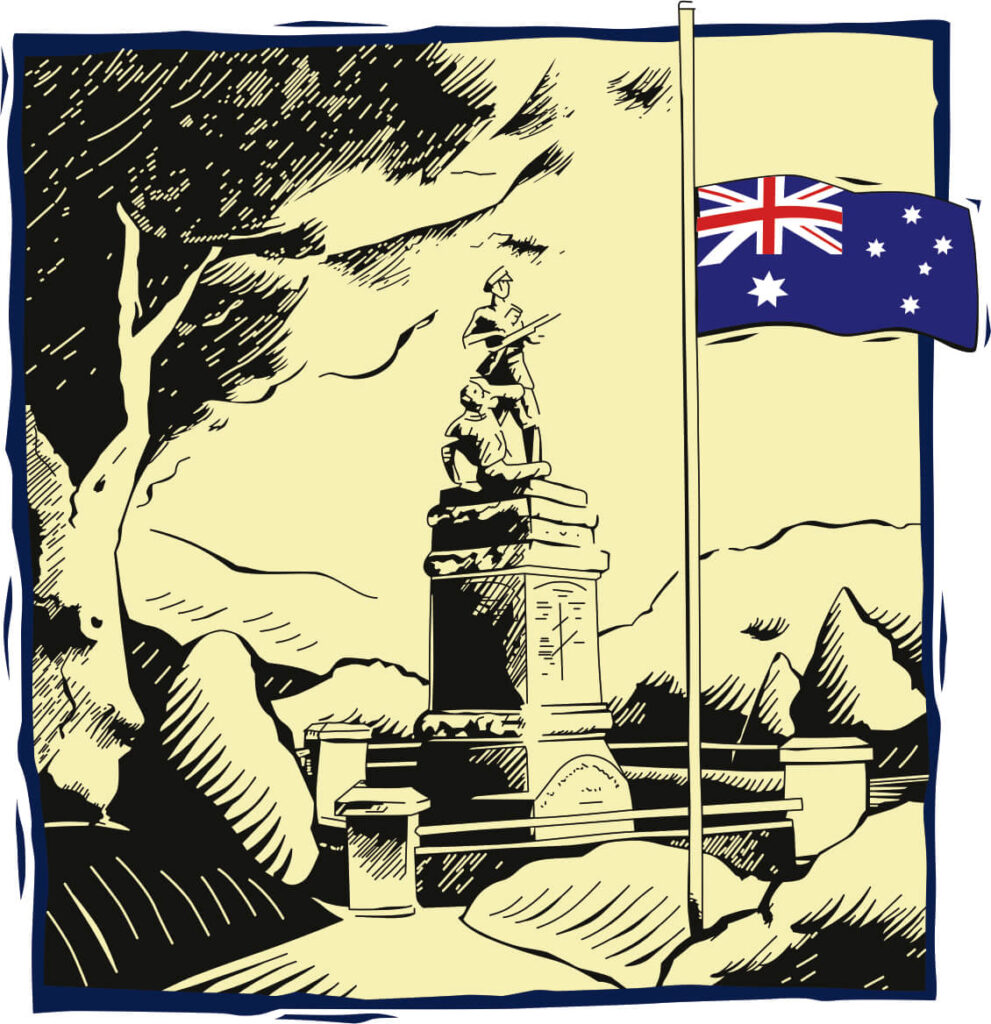
The Australian National flag should not be lowered as a form of salute even when it is appropriate for other flags or ensigns being carried in a procession to be so lowered.
Flags are flowing in the half-mast position as a sign of mourning.
To bring the flag to the half-mast position, the flag must first be raised to the top of the mask (the ‘peak’) then immediately lowered slowly to the half-mast position. (This position is estimated by imagining another flag flying above the half-mast flag – in European mythology, the flag flying above is the flag of death.) The flag must be lowered to at least a position recognisably half-mast so that it does not appear simply to have slipped down from the top of the flagpole. An acceptable position would be when the top of the flag is a third of the distance down from the top of the flagpole.
When lowering the flag from half-mast position, it should first be briefly raised to the peak, then be lowered ceremoniously.
Under no circumstances should a flag be flying at half-mast at night, whether or not the flag is illuminated.
Here are some examples of the type of information we can supply around flag etiquette: